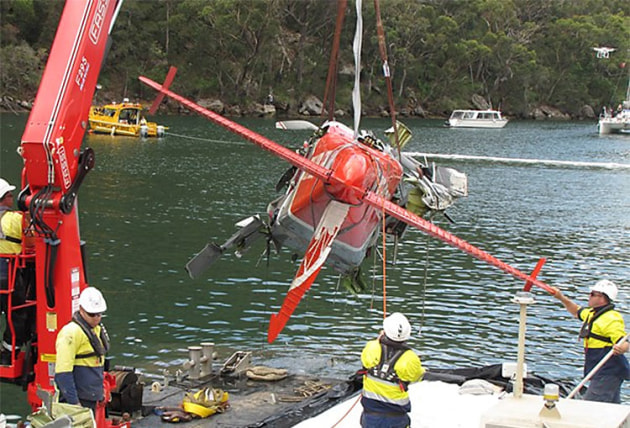The Australian Transport Safety Bureau (ATSB) today issued a carbon monoxide (CO) warning to all aircraft operators after the investigation into a floatplane crash revealed the pilot had elevated levels of the gas in his blood.
De havilland DHC-6 Beaver VH-NOO crashed in Jerusalem Bay on the Hawkesbury River in December 2017, killing all six people on board.
The investigation, which has not been completed, discovered that the aircraft was flying with a cracked exhaust collector ring and missing bolts in the firewall, which combined to enable CO gas to leak into the cockpit. The pilot and two passengers were found to have significant amounts of CO in their blood.
“During the draft review process for the investigation’s final report, the aviation medical specialist engaged by the ATSB recommended that carbon monoxide toxicology testing be undertaken on blood samples of the aircraft occupants,” said ATSB Chief Commissioner Greg Hood.
“From that consultation with medical experts, and research into the effects of carbon monoxide on aircraft operations, the ATSB considers the levels of carbon monoxide were likely to have adversely affected the pilot’s ability to control the aircraft.
The ATSB then re-examined the accident aircraft and ran tests on another Beaver to replicate the potential source of carbon monoxide and ingress into the aircraft cabin.
“Having discounted other potential sources of carbon monoxide exposure, the ATSB considers it likely that the pilot and passengers were exposed to carbon monoxide inside the aircraft cabin," Hood said.
The ATSB today published two Safety Advisory Notices focusing on the prevention and detection of CO in aircraft cockpits to remind aircraft maintainers that the primary mechanism for the prevention of CO leaking into cockpits and cabins is to carry out regular inspections of aircraft exhaust systems, to identify and repair holes and cracks, and to detect breaches in the firewall.
The ATSB is also highlighting the limitations of disposable CO chemical spot detectors, as often used in general aviation, and was fitted to VH-NOO. Spot detectors have a limited shelf-life, can be affected by factors such as direct sunlight and cleaning chemicals, and are passive, relying on pilots to regularly monitor them.
“In contrast, electronic active carbon monoxide detectors are designed to attract the pilot’s attention through auditory and/or visual alerts when carbon monoxide levels are elevated,” Hood said.
“These detectors are now inexpensive and widely available. Had there been an alert of the presence of carbon monoxide, the pilot would have been able to take measures to reduce the risk to those on board.”
The investigation is ongoing, but the safety notices are available from the ATSB website now.



